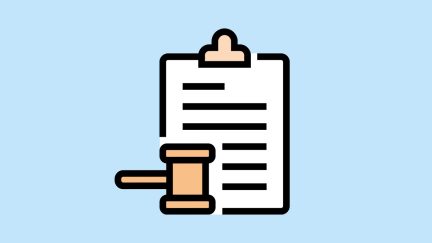For more stories like this, sign up for the PLANSPONSOR NEWSDash daily newsletter.
E-Delivery Proposal Could be Improved, Stakeholders Say
While the retirement plan industry has reacted positively to a DOL proposal to make default e-delivery of plan documents the norm, their comment letters also include additional ideas to make the new rules even more effective.
In October, the Employee Benefits Security Administration (EBSA), part of the Department of Labor, published a proposed version of a new rule that would permit retirement plan sponsors and service providers to make the electronic delivery of plan documents and disclosures the default.
While announcing the proposed rule’s publication, Labor Secretary Eugene Scalia said this policy shift offers Americans more choice in how they receive important retirement information.
“By adjusting for modern technology, the Department can help save billions of dollars in costs for the U.S. economy,” Scalia said. “The U.S. Department of Labor is focusing on rulemaking that eliminates unnecessary burdens while furthering the needs of the wage earners, job seekers, and retirees of the United States.”
According to Secretary Scalia, the Department expects the proposal to expand use of Internet technology to furnish covered disclosures to workers and to potentially result in more than $2 billion in net cost savings over the next 10 years for ERISA-covered retirement plans by eliminating materials, printing and mailing costs associated with furnishing printed disclosures.
As it revealed the proposed rule text, the DOL also called for retirement plan industry comments “on whether other, additional steps could be taken to further improve workers’ retirement plan disclosure experience.” And to that end, the proposal included a separate request for information that contains detailed questions covering a broad range of disclosure-related topics, including scope, content, design and delivery. Secretary Scalia said responses to these questions “will enhance the Department’s record and inform whether additional changes should be made in response to that feedback in the future.”
The deadline for industry comments was November 22, 2019. Leading up to that date, multiple retirement plan industry providers shared their detailed comment letters with PLANSPONSOR. Generally speaking, industry stakeholders enthusiastically support the e-delivery default rule, but they have raised certain points where they feel adjustments or additional actions are needed on the part of EBSA/DOL.
For example, in the Insured Retirement Institute’s (IRI) comment letter, penned by Jason Berkowitz, chief legal and regulatory affairs officer, it is suggested that Field Assistance Bulletin (FAB) 2006-03, which was published in December 2006, should remain available as an alternative approach to electronic delivery.
“The preamble to the proposal indicates that, although the current regulatory safe harbor would remain in effect, if adopted, the proposal would supersede relevant provisions of FAB 2006-03,” Berkowitz writes. “FAB 2006-03 provides broad guidance as to what the Department will consider to be good faith compliance with ERISA’s requirements on pension benefit statements, pending issuance of regulations, and among other things covers the electronic delivery of those statements.”
According to Berkowitz, many IRI members currently rely on FAB 2006-03, and they believe it can and should continue to exist in tandem with the framework in the proposal.
“The preamble makes it clear that the proposal sets forth a notice and consent process that is intended to be an alternative and optional safe harbor, and not the exclusive means of electronic delivery,” the IRI letter states. “FAB 2006-03 describes several acceptable electronic means of delivering the required notices, including the Department’s 2002 safe harbor regulation and Treasury Regulations regarding electronic delivery of retirement plan communications, as well as through a secure website. Express language from the Department on the superseding of the FAB could cause confusion as to extent to which any of these methods remains acceptable alternatives.”
With regard to notice and consent methodologies, Berkowitz writes, the proposal adds a number of requirements not currently in existence.
“It is unclear how many requirements can be met when the furnishing of benefit statements has been delegated to a service provider who is not the employer,” his letter states. “Current systems are not set up for this. Given the effective and applicability dates, plans and providers could end up with less than one year to determine how to reconcile the regulations with current practices and rebuild systems.”
IRI’s others suggestions include that plan administrators should be permitted to use electronic means to deliver both the initial notification of default delivery and the right to opt out to employees who have previously provided affirmative consent to receive disclosures electronically, in accordance with the existing 2002 safe harbor regulations. Berkowtiz’s letter also states that the special rules for severance from employment are needlessly complicated and burdensome.
“They go significantly beyond what is required under the current regulatory frameworks for both paper and electronic delivery,” he notes.
Finally, the IRI feels the policy reasons for modernizing the delivery rules for pension benefit plans would also apply in the welfare benefit plan context, and therefore, it would support extension of the proposal to facilitate broader use of electronic delivery for welfare benefit plans.
Another provider to share detailed comments is TIAA, which submitted a letter to DOL/EBSA written by Steven Kronheim, managing director and associate general counsel. Like the IRI, TIAA’s take on the proposed rulemaking is positive overall, and it includes additional suggestions for improving the proposal even further.
“Proposed Rule 29 CFR § 2520.1 04b-31 (c)(1) states that the default electronic delivery safe harbor applies to any document that a plan administrator is required to furnish to participants and beneficiaries pursuant to Title I of ERISA, except for any document that must be furnished upon request,” Kronheim writes. “TIAA commends the Department for drafting the Proposed Rule to cover a broad group of existing disclosures and notices. TIAA recommends the Department clarify that the Proposed Rule may be leveraged by plan administrators to deliver any disclosure or notice that may be required in the future if it must be furnished to participants and beneficiaries pursuant to Title I of ERISA, except for any document that must be furnished upon request.”
TIAA’s letter states that it fully supports the proposed rule allowing utilization of email addresses, smartphone numbers and Internet addresses for the provision of important plan information.
“However, we also see emerging technologies moving away from traditional approaches such as desktop or laptop computers in favor of smartphones and voice assistant devices,” Kronheim writes. “Thus the proposed rule should allow for flexibility in the method for notifying participants that a covered document is available and where participants can access such covered documents. Flexibility could be defined both in how the notice is delivered and what information needs to be included in the alert. For example, if a participant is using a multimedia voice assistant … the plan administrator could send a voice alert informing the participant that a new covered document is now available on the Internet. … Another area of opportunity is the use of mobile applications to provide notices and disclosures.”
TIAA’s letter also calls on DOL/EBSA to clarify that personal mobile smartphones that are not provided by an employer can be leveraged to satisfy the alternative method of disclosure through electronic media. Finally, TIAA recommends DOL/EBSA eliminate the summary annual report (SAR) requirement.
“The purpose of the SAR is to summarize for employees the information that appears in Form 5500 for the plan,” Kronheim writes. “Because the information in the SAR duplicates the information in the Form 5500, we believe it is unnecessary to send the SAR unless a participant specifically requests that information from the plan sponsor. In addition, because the Form 5500 is public information, the participant can request or access that information without having to receive a SAR. Eliminating the requirement to provide a SAR would not decrease participants’ access to key information, and would produce significant cost savings for plan sponsors.”

